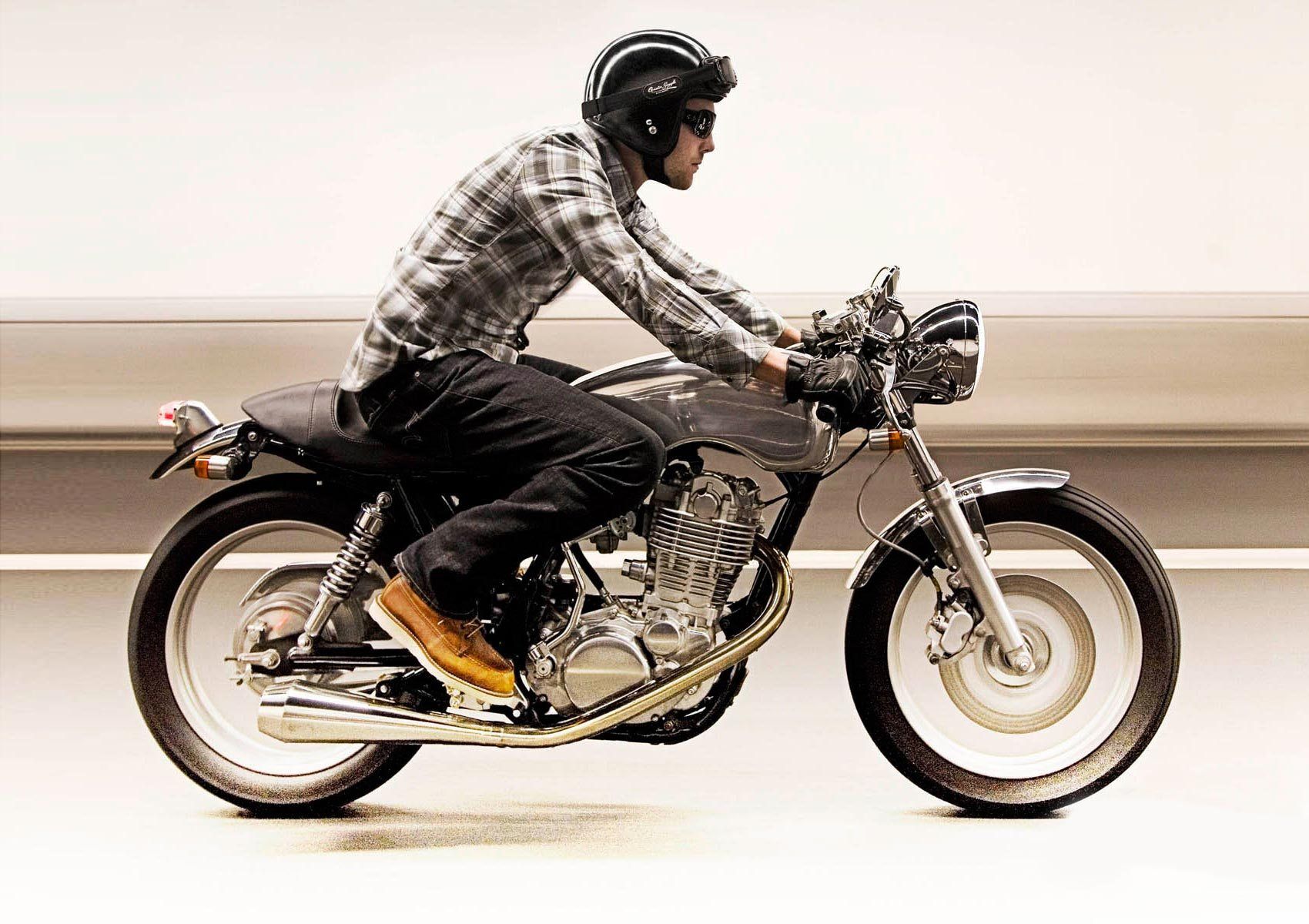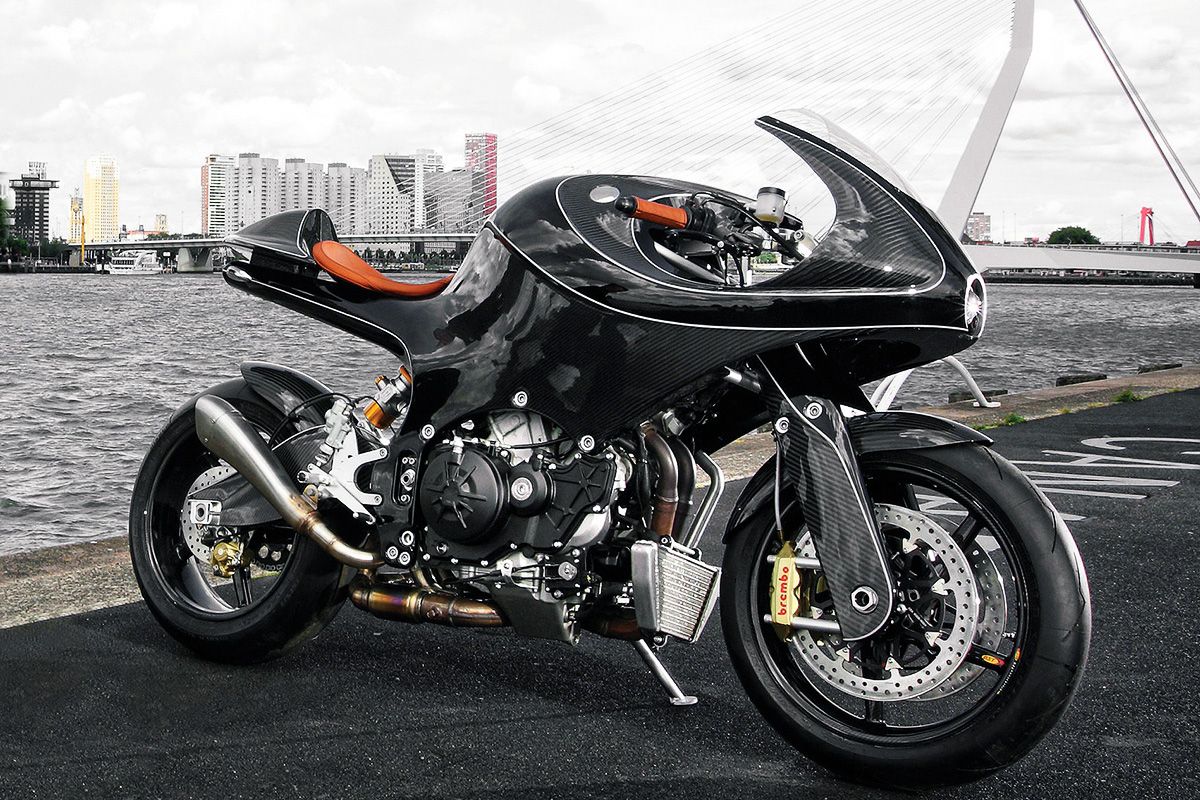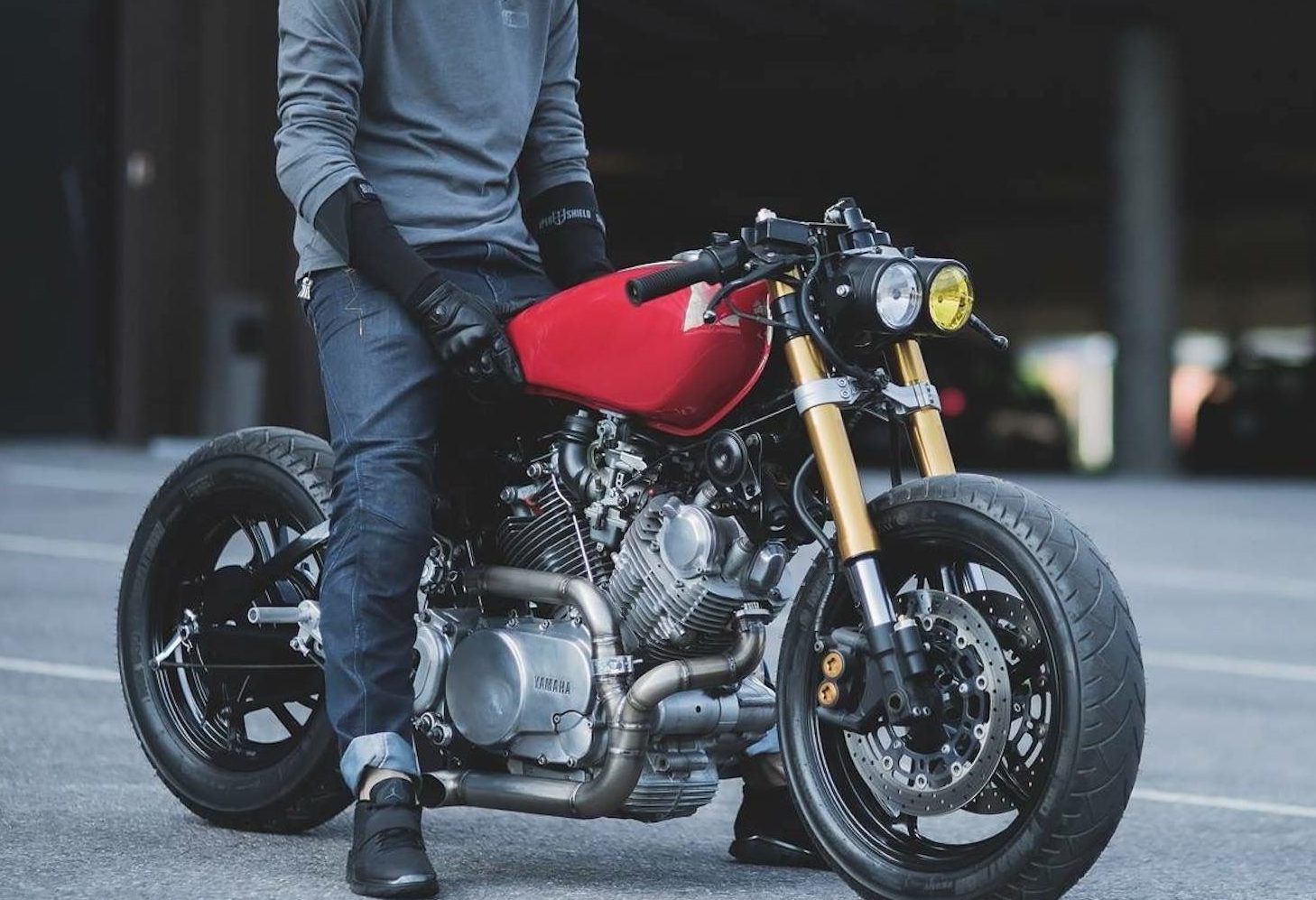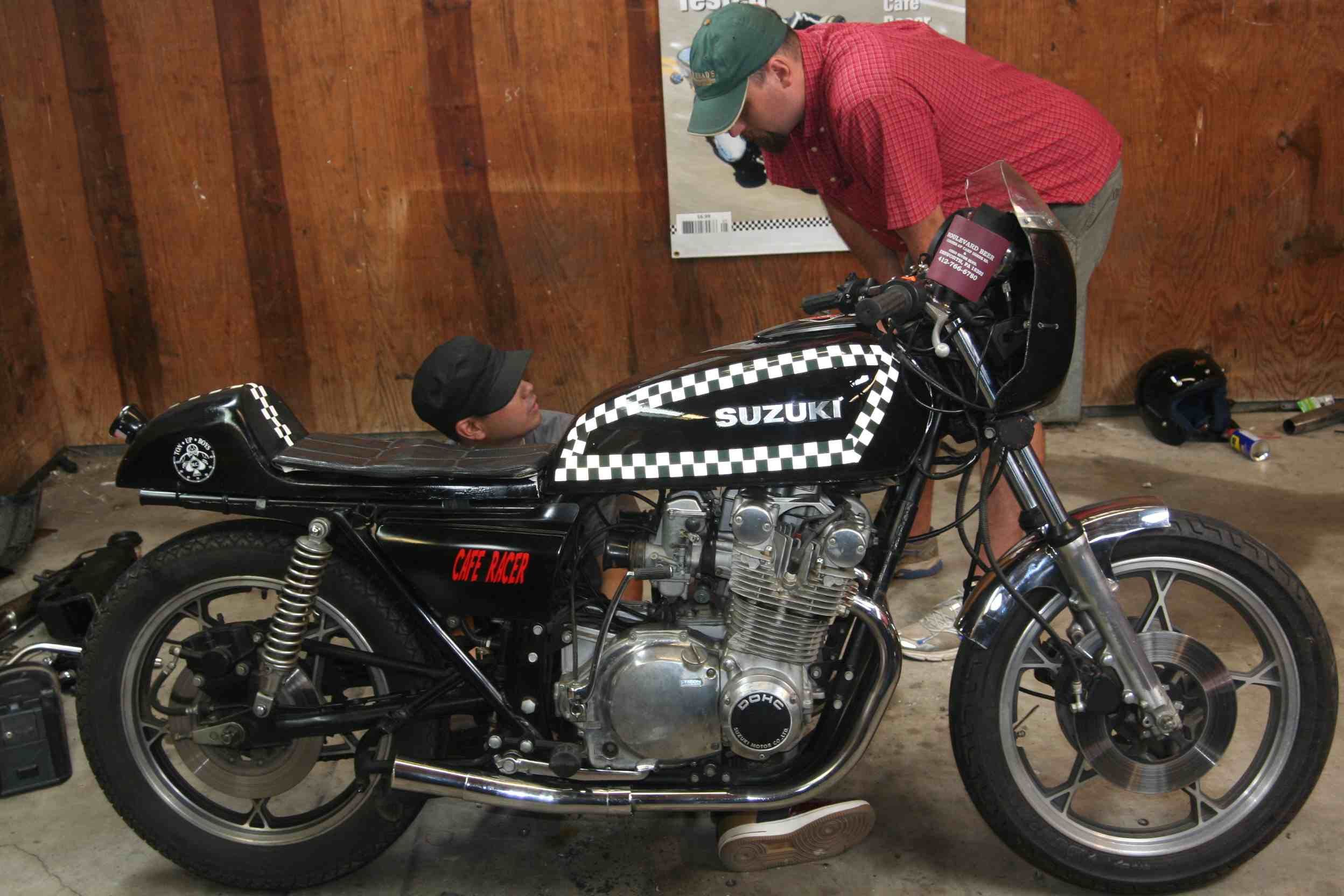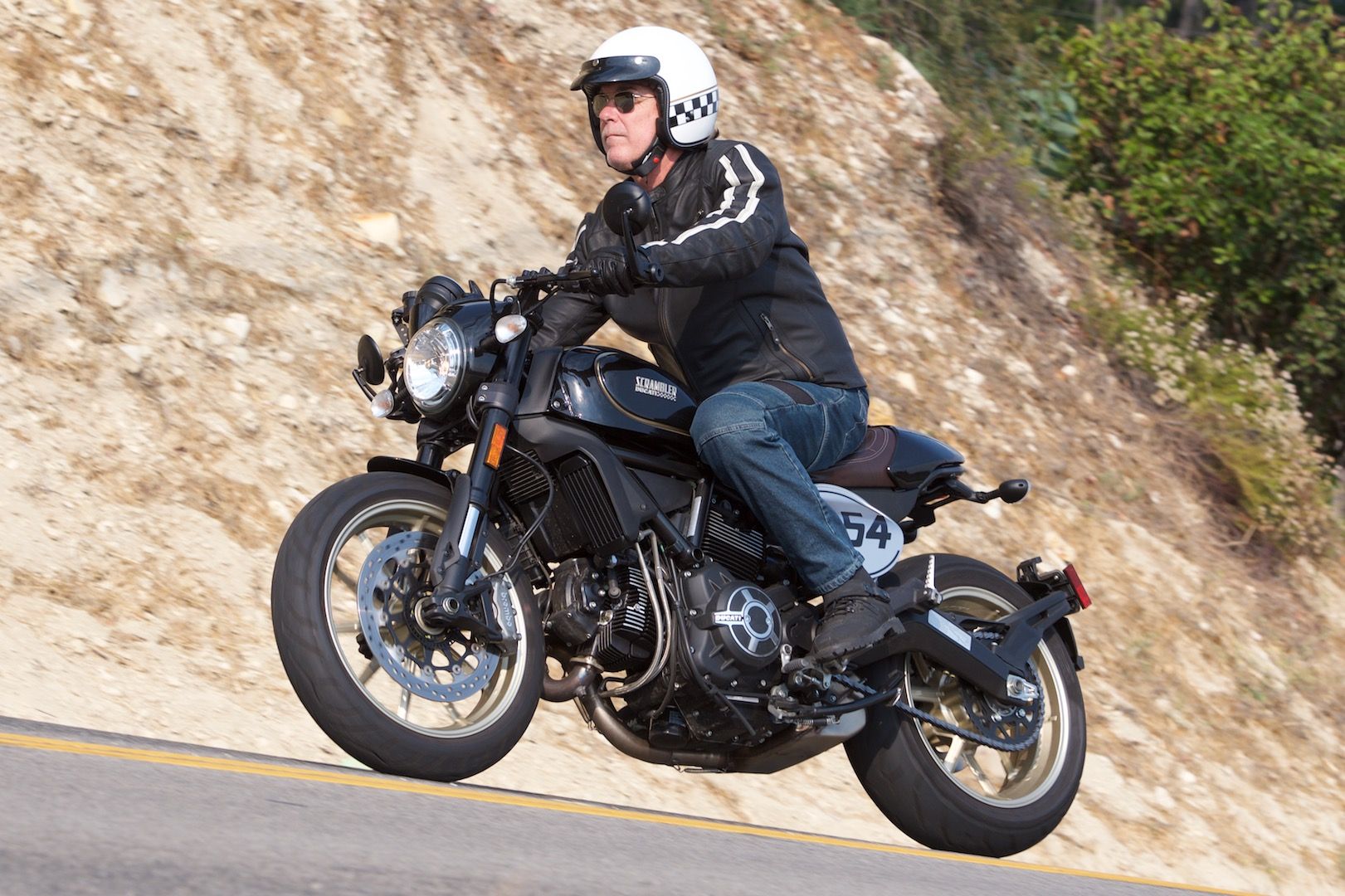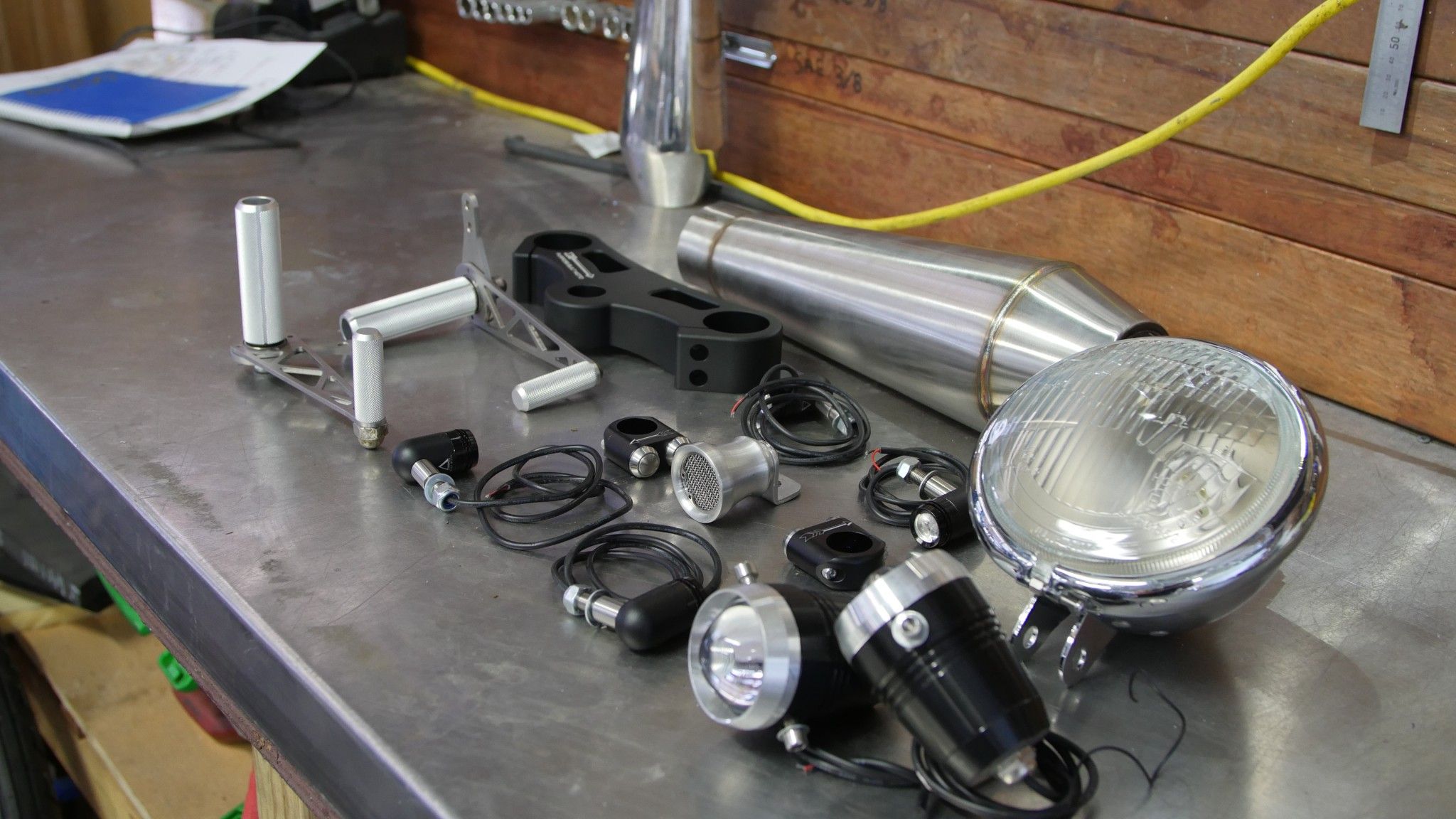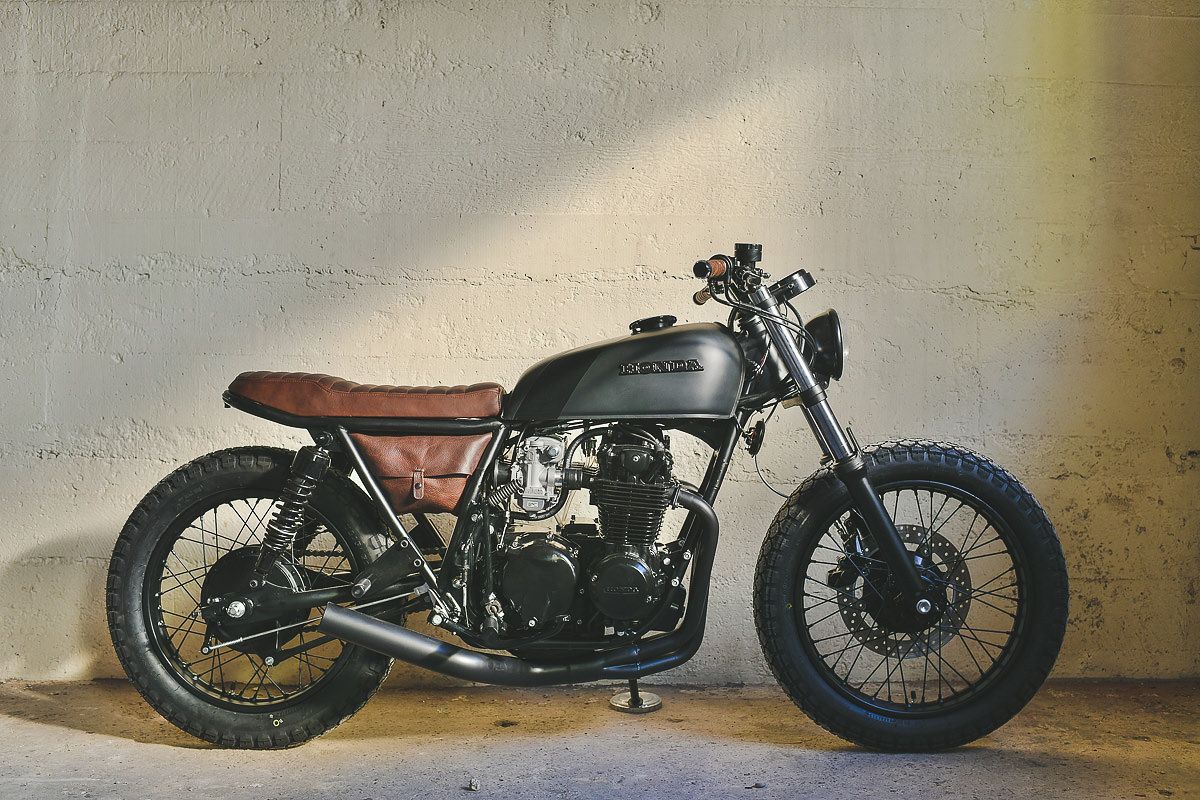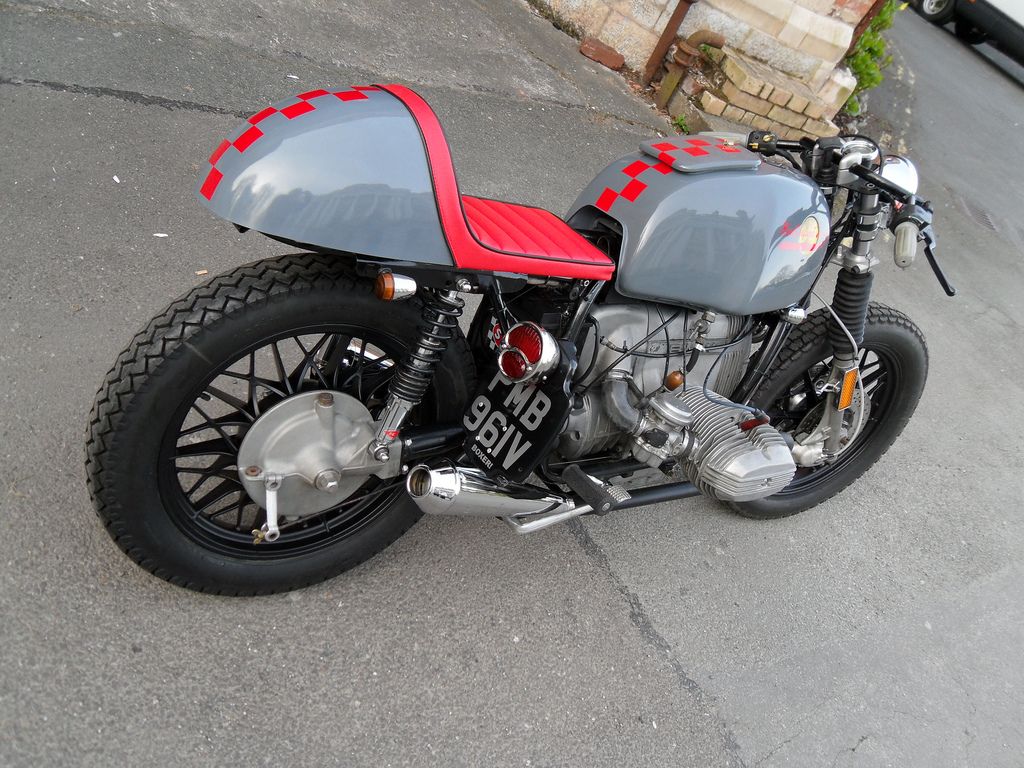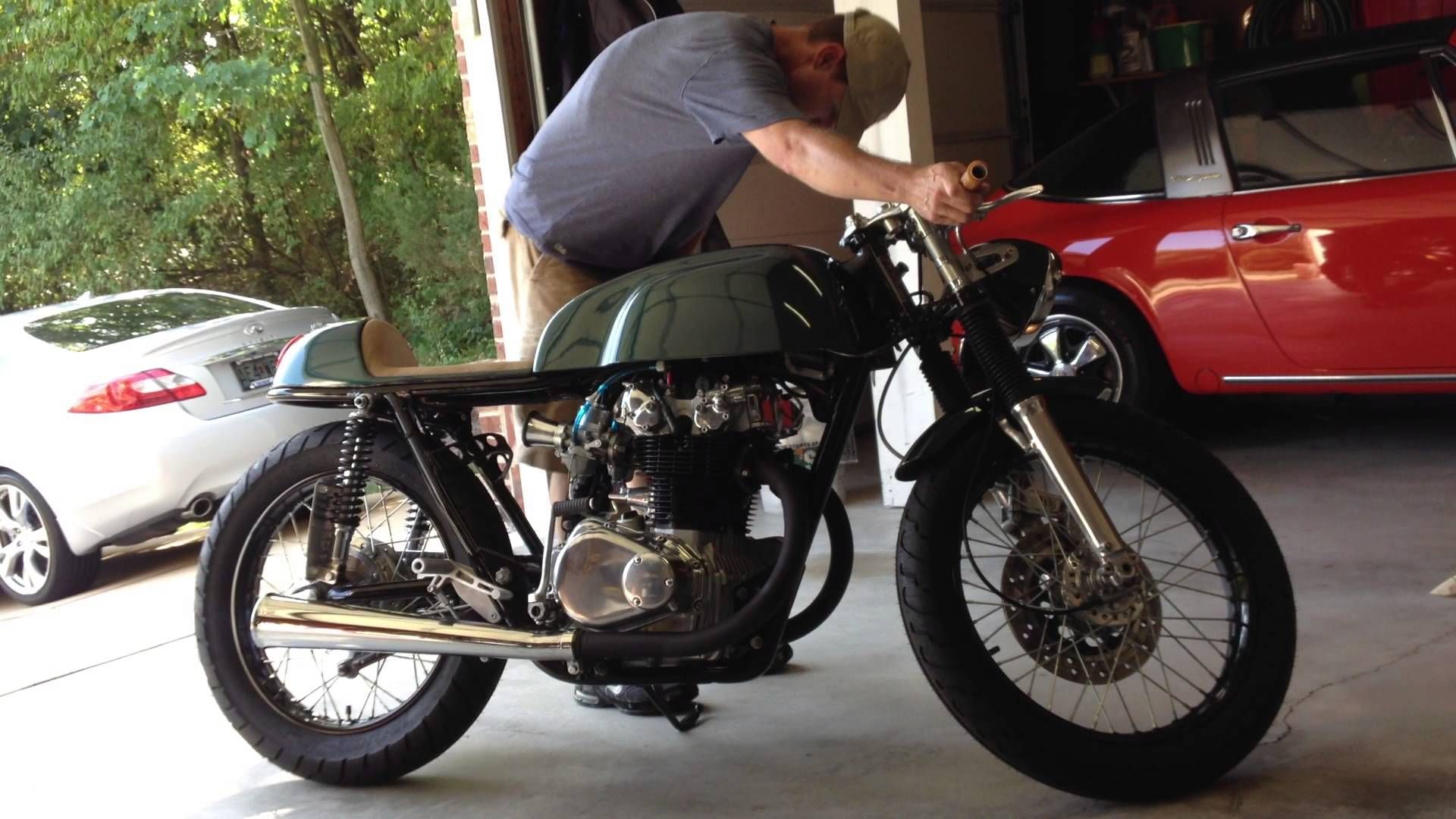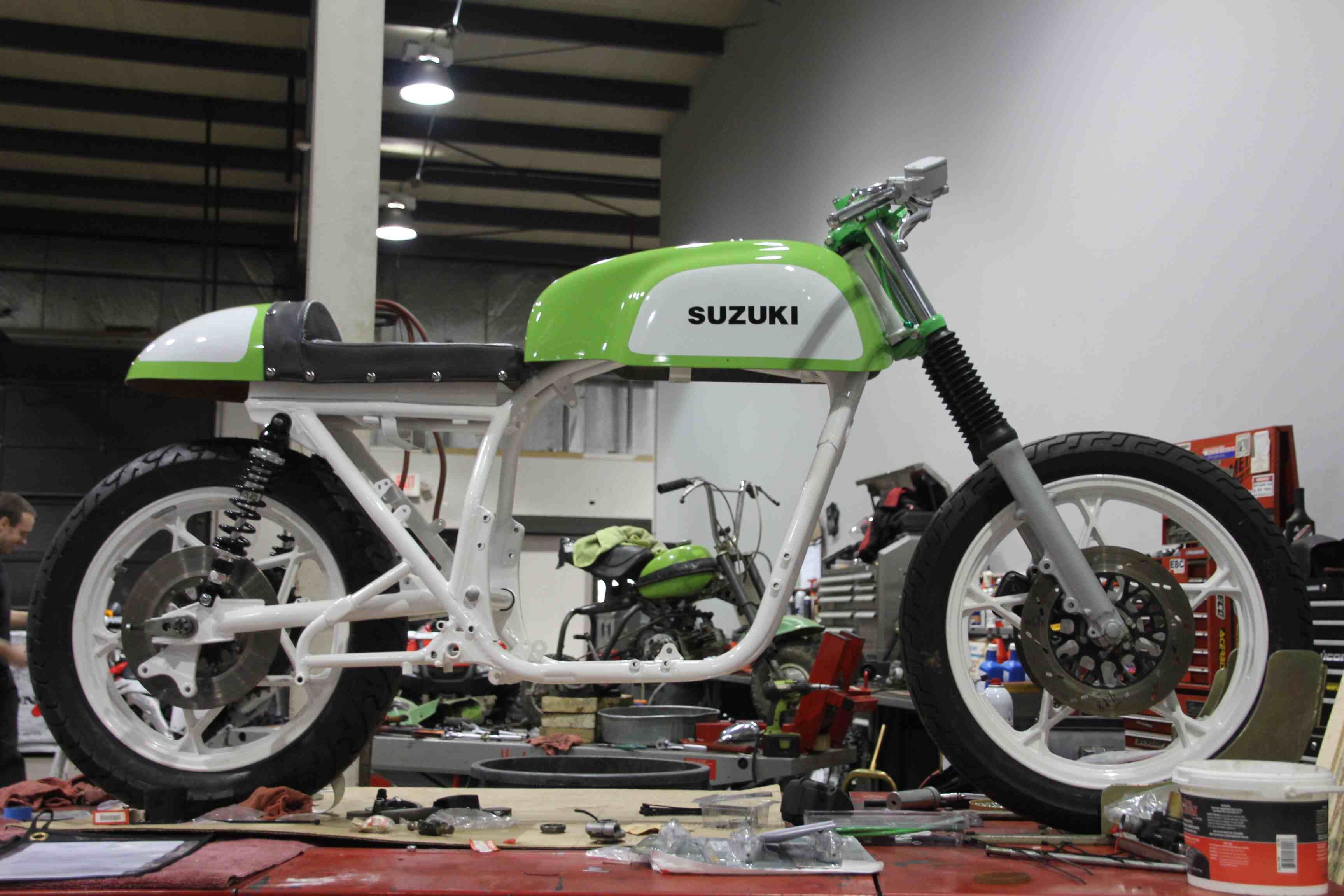A café racer is a fun bike to ride. Contrary to popular belief, these aren't just hipster machines ridden by people who only care about aesthetics and image rather than function. They are lightweight, powerful machines that have been optimized for speed and handling. However, that doesn’t mean you can’t have longer rides in comfort. Much like bobbers, these bikes are noted for their visual minimalism, and anything that's not needed will be removed. Café racers are noted for their low-mounted handlebars and forward-leaning seating, their prominent seat cowling, and elongated fuel tanks.
Updated January 2022: If you want to build a café racer motorcycle but aren't quite sure where to begin or which pitfalls to avoid, we've got great news for you. We've updated this article with more information on how to attack the project, as well as some common misconceptions people have about these bikes.
The style sprung up in the early 1960s in London, specifically within the Rocker or “Ton-Up Boys” youth subculture. There has since been a wave of popularity regarding café racers, and now even big companies like BMW, Honda, Kawasaki, and Yamaha are introducing factory-made café racers. But that sort of defeats the purpose of a proper café racer, it's much more fun to build it yourself or with friends. However, one thing that's not fun is to make every common mistake that amateur builders make. With that in mind, let's take a closer look at how to avoid the most common mistakes when building a badass café bike, and we'll also disprove many misconceptions about café racers.
10 Myth: People Build Café Racers Purely For Aesthetics
Another misconception based on the prior entry is that people nowadays only ride café racers for the aesthetic. The truth of the matter is that most riders use these bikes in order to go fast. Café racers are stripped down, minimalist bikes—the seat shape, missing bits, and overall look are intended to go fast. The other point is that people building café racers for aesthetics or image or street cred or whatever is not entirely a bad thing. They might get a bad rep from some people in the community, but you don’t rag on someone who wears a LeBron jersey even though they don’t actually play for the Lakers, do you?
9 Mistake: Being Too Ambitious
There are certain steps to building a café racer. You should avoid starting a major café racer project if your budget is too low. If your budget is low, you need to set your expectations lower, otherwise, the build will probably end up as an unfinished, overly ambitious project. It’s always preferable to invest a little more in the beginning and buy a simple and reliable motorcycle that will require only a few changes to be a good café racer. With time, you will be able to save more money and finish the project exactly as you dreamed.
If you’re building a café racer simply to show off and impress others, you could be making a mistake. As previously mentioned, building for aesthetics isn’t wrong, per se, but if it's your first build, you should probably keep the focus on building a bike that's fun to ride. There’s a big difference between bikes built merely to impress and impressive motorcycles. The path to building impressive bikes is usually the opposite of what people think: simplicity, discreetness, and rideability.
8 Myth: They’re A Bad Investment
The opposite is true, actually. When you buy a new motorcycle, you can be sure that you’re going to lose money every day. Within five years, your bike will be worth about 50% of its initial value. But if you buy a 30- or 40-year-old bike and convert it into a café racer style, the value will probably increase with the years. Just like every classic with wheels, café racers are often worth more than the original bike they were made from. This means they will almost always be a good investment—so build on! That is, unless suddenly overnight café racers become universally hated and panned and no one wants to buy them anymore (that’s not going to happen).
7 Mistake: Rushing The Build
The “For the Bold” channel puts it best on this one, and it’s tried and true advice: measure twice, cut once. Don’t rush your build; it’s always better to over-measure than to under-measure. Building a café racer can be complicated, even though the end result should look minimalist and simple. Wait to dismantle your bike, take a step back, and have a good blueprint. It’s easier to cut little chunks until you get the right shape, rather than to cut too much off and then have to weld it back on. Also, if you’re moving something, think first about how you’re going to refit it before chopping it off.
6 Myth: They’re Uncomfortable
This misconception usually comes from how the seats of café racers are shaped. The fact is that not all café racers are uncomfortable (though some certainly are). If someone is building a custom motorcycle, it is natural that the rider position needs to be suited to the rider’s size. Just like a tailored suit, the main goal to get a good driving position taking into consideration the rider’s weight distribution. The secret is finding comfort through the arms, backside, and the legs. In other words, the rider’s weight is to be proportionally distributed, to avoid too much pressure on any of these three points of the body. With care, you can have a seat that isn’t an agonizing pain on your body.
5 Mistake: Making Decisions Without Thinking About The Details
Being careless is something that many amateur builders are guilty of. We aren’t talking about decorative things, such as artistic paint jobs, or the turn signal’s color, but rather the details, such as the size of each part and how they will fit in the bike. Everything needs to be carefully mapped out. These are the little things that will bring quality to your project. Don’t expect that everything will fit together—check all measurements before buying any parts or accessories. Try to use a digital creator to see how they will fit into the final project before you do any building. This way, you will avoid unpleasant surprises and everything will seem nicely done.
4 Myth: It’s Expensive To Build A Café Racer
If you don’t know what you’re doing, it CAN be very expensive to build a café racer, that is true. But even if you don’t know what you’re doing, you can still get by on the cheap. People who don’t follow through might find themselves in a hole, but you can chop up a bike and turn it into a café racer for around $1,200, if you know what you’re doing. You can also spend upwards of $20,000, though, so be careful. You don’t want to be one of those people who end up with a pile of parts from a chopped bike that can’t be returned to stock condition.
3 Mistake: Choosing A Difficult Base Bike
Another common mistake amateur café riders make is choosing the wrong base bike. Some do it because they already have the bike, and others buy one because it’s cheap. The advice is to avoid starting a café racer project with a difficult base motorcycle. In some cases, it’s achievable, but it will require more work and money than if you had started with the right bike. In the end, it probably won’t even be worth the money that was spent during the project. Look for something that has a decent aftermarket if you want to make it as easy for yourself as possible.
2 Myth: Maintenance Is Always Expensive
Most parts of old racer bikes are reliable and easy to maintain. The engines are simple and most maintenance work can be done by yourself, in your garage. Even if you don’t have experience with mechanics, you can easily find online videos with tips and tricks to keep your café racer in tiptop condition. So, after the initial expense of building one of these bikes, maintenance is actually on the cheaper side. In most countries, the annual taxes and insurance are inexpensive for old motorcycles, so if you want to get by with cheap maintenance, an old café racer is one of the best options you can choose.
1 Mistake: Cutting Corners
Many amateur café racer builders cut corners and costs and try to “cheat” their way into making a good bike. This strategy doesn’t usually turn out good results. As you’re working on your project, and you see the costs slowly rising, you might want to try to save a few dollars here and there on things you don’t think are necessary. This point doesn’t come down to aesthetics, really, but to the most important point of all: your safety. Remember that this is a moving machine. You’re going to be sitting on it wearing nothing but a helmet and some leathers. Your life and safety depend on not cutting costs.
Sources: RACER TV, For the Bold, Cartoq, BikeBound, TeeJaw.


